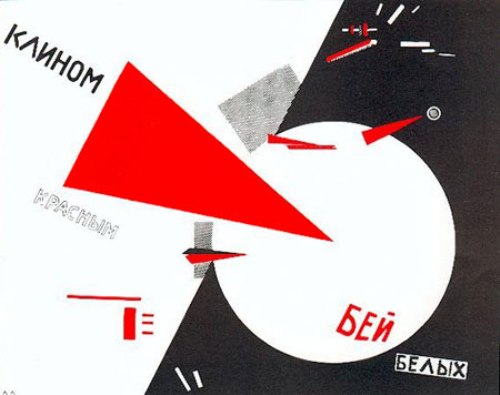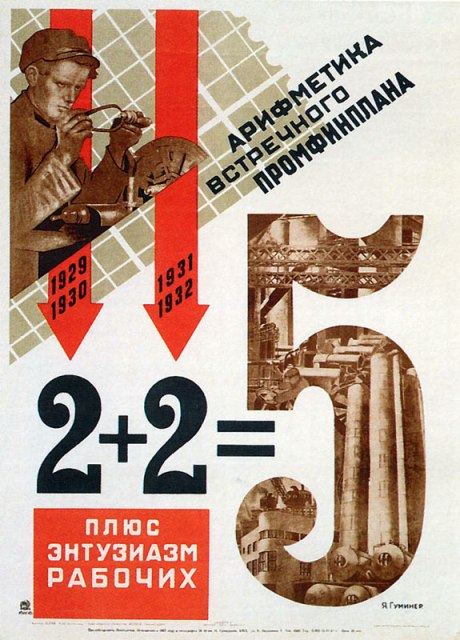Мы продолжаем напряженно работать, чтобы улучшить наш сайт и перевести его на другие языки. Русская версия этой страницы еще не совсем готова. Поэтому мы представляем здесь пока английскую версию. Мы благодарим вас за понимание.
Пропаганда в эпохе Булгакова
The Bolshevik era (1917-1921)
At the time of the Bolsheviks, a life and death struggle took place for ideology. Citizens had to help to fight enemies within and without, and the propaganda was full of revolutionary fervor and powerful symbolism.
Scene from Heart of a Dog
The New Economic Policy (1921-1927)
In March 1921, in the course of the 10th Congress of the All-Russian Communist Party, Vladimir Lenin (1870-1924) introduced the Новая экономическая политика (НЭП) [Novaya ekonomicheskaya politika] (NEP) or New Economic Policy (NEP), by which a number of private enterprises could be established. Small farms and businesses could flourish again, while the state retained control of heavy industry, transport and foreign trade.
It was a period of recovery and relative freedom for a country that had been ravaged by war, famine and bitter discontent.
In arts, the Constructivists rejected art for art's sake and wanted to contribute to the building of a new communist society. Art For Production was the battle cry of artists like Lazar Markovich Lissitzky (1890-1941), better known as El Lisitsky, and Aleksandr Mikhailovich Rodchenko (1891-1956). Their graphics and photomontages had a great influence on the Bauhaus and western graphic arts as a whole.

Beat The Whites With The Red Wedge
The first and second Five-Year Plans (1928-1937)
Joseph Stalin (1878-1953) abolished the New Economic Policy in 1928. He replaced it by the Five-Year Plans, which were nationwide centralized economic plans as dramatic attempts to transform Russia into a communist industrialized power. The propaganda of the First Five-Year Plan glorified the heroic aspect of this effort.
Private farms were abolished and replaced by collective enterprises in which the peasants worked for the State. The resistance against it was brutally suppressed and in 1933, both industry and agriculture were firmly under the control of Stalin. All means of propaganda were used to declare plan as fully realized six months before the deadlines. On the poster below is mentioned that the Soviet society realised the first Five Year Plan in only four years, which created the need for a new way of counting, арифметика встречного промфинплана [arifmetika vstrechnovo promfinplana]. The counting should not only be done by numbers, by the way, since 2+2=5, плюс энтузиазм рабочих [plyus entuziazm rabochikh] or plus the enthusiasm of the workers.

2+2=5 plus the enthusiasm of the workers
At the time of the Second Five-Year Plan, the period of the Great Purge, the avant-garde art was banned completely. The theme of those years was mobilization. In 1932, Stalin decreed that all art had to conform to the norms of Social Realism, and the propaganda had to be a «realistic representation» of the Soviet Communist values and life and all forms of expression were mobilized to serve the state.
The plan generated a plethora of strictly controlled propaganda. Striking posters appeared everywhere, in factories, farms and all public areas, in a wide variety and massively. The country was in the attack to implement the plan, to get the quotas and to defend the Soviet Union.




